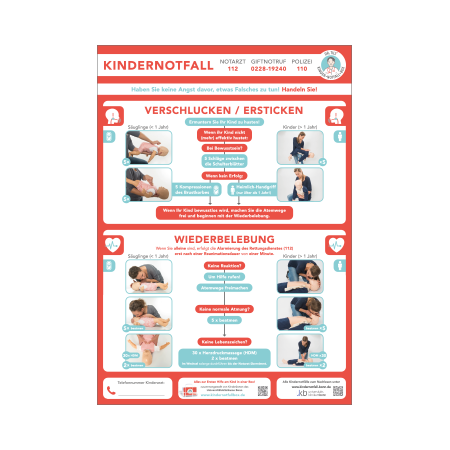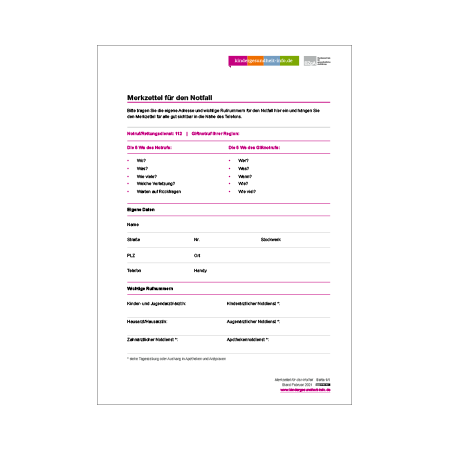First aid for children
First aid for infants and children
Every parent wants to do the right thing in an emergency. Because there is probably nothing worse than the idea of something happening to your child and not knowing how to help quickly. Taking targeted action in the first few minutes after an emergency can make the difference between life and death.

Attend a first aid course
The best way to learn what you should know and be able to do as a first aider is to attend a first aid course. Experienced instructors will show you how to recognize dangers and practice with you the moves that can save lives in an emergency. Practical tips will prepare you to intervene quickly and do the right thing in an emergency.
Checklist for first aid for children
An emergency situation almost always occurs suddenly and without warning. Keep calm and level-headed at all times. Proceed as follows:
- Get a quick overview of what is happening.
- Is it a life-threatening situation? If you are alone, call the emergency services on 112 only after one minute of resuscitation.
- Check the breathing and check whether the heart is beating.
- Is the child no longer breathing? Perform two ventilations and 30 chest compressions alternately until the child is breathing again or the emergency doctor arrives.
- Is the child unconscious but breathing? Place them in the recovery position.
- Is the child injured? Treat the wound and have the injury examined by a doctor.
- Is the child showing noticeable symptoms after a delay? Make sure you call your pediatrician.
Where can we find help and advice?
- In an emergency, call the emergency services immediately on 112.
- A list of poison control centers can be found on the website of the Federal Office of Consumer Protection and Food Safety.
- Special courses for first aid for children are offered by midwives, family education institutions and local aid associations (e.g. DRK, DLRG, ASB, Malteser Hilfsdienst, Johanniter-Unfallhilfe e. V.).





